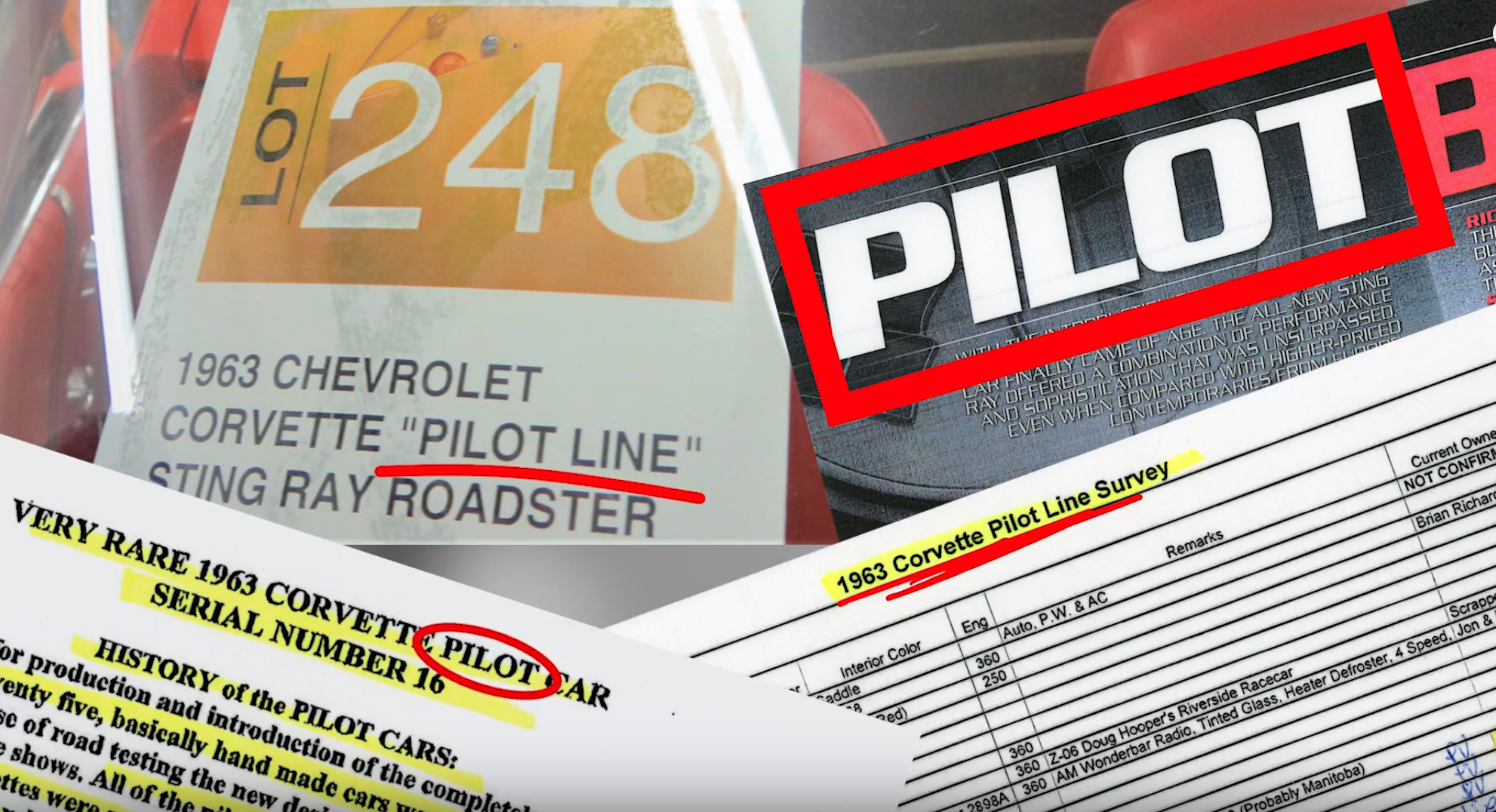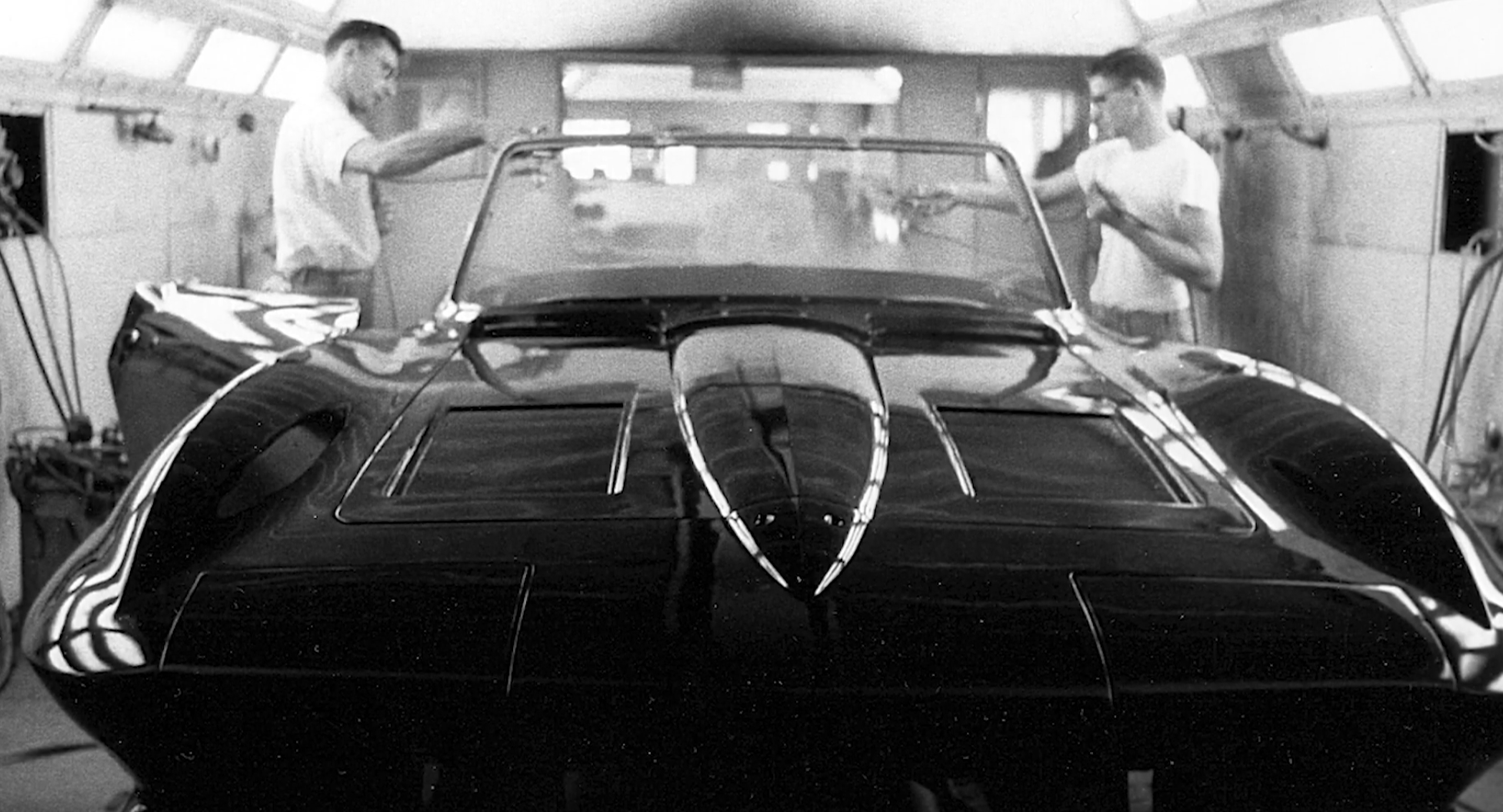We’re telling you, no one can agree on these Corvettes!
In part one of the three-part-series on the early VIN 1963 Corvettes, that may have or not have been ‘Pilot Line’ cars, we dove head first into the rabbit hole and just as it seems that we’ve reached the bottom, it becomes apparent that there is a whole other level to this. The journey started when we tracked down three of the first 23 (or 25) 1963 Corvettes, that are clearly different from the regular production Corvettes, photographic evidence documenting the differences from official production-spec, and an expert that has done extensive research into the car's history. Case closed right? Maybe not. Actually, it’s just getting blown wide open.
What's In A Name?
What are these cars called, exactly? The consensus on that term is not settled, and what this means is not agreed upon in the Corvette world. The paperwork and articles referring to the initial Corvettes produced under the 1963 design seem innocent enough, but digging deeper, the lack of definitive information makes the situation more mysterious.
There are many references to the early 1963 cars as being ‘Pilot’ cars, or what would commonly be referred to as the 1963 Corvette Pilot Line. As it turns out, there were no actual Pilot Corvettes in 1963, according to Larry Galloway, a Quality Engineer at GM during the time these Corvettes were being made. Pete Vicari, current owner of three of these Corvettes, and someone who has done extensive research on these cars, also agrees that ‘Pilot Line’ is not correct when referring to these 1963 Corvettes.
Curiously enough, literature shared with us by the GM Heritage Center - for reference only, so we're unable to share the exact documents - shows that there is internal documentation calling these cars 'Pilot' cars. There's also marketing material from GM that again makes the 'Pilot' reference!

What starts to throw up even more questions is that the C2 Corvettes were in production on the St. Louis assembly line, but photographs show a handful of 1963 bodied Corvettes at the Flint Pilot Plant. However, there are no records of 1963 Corvettes being produced at the Pilot Plant, so what were they doing there? Which is what has prompted some to call these cars ‘prototypes’ after the photographs were released by the photographer’s grandson in recent years.
What the ‘Pilot Line’ reference is said to represent is the pre-production 1963 Corvettes that were built. To add another phrase to the mix of ‘pre-production’ and ‘Pilot Line’ is the term ‘prototype’ that has become the third way to represent these 23 (or 25!), special Corvettes.
So, what is the correct name for these cars? Good luck getting anyone to agree on that.
Call it a ‘Pilot Line’, ‘pre-production’, or ‘prototype’, the Corvettes these terms cover started rolling down the assembly line first, so from here on out, we're sticking to pre-production cars, just to play it safe.
Production Controversy
What to call these cars is only part of the controversy. The belief is that, while the 1962 Corvettes were still in production, 1963 Corvettes were on the same line. Historical factory photos actually show a 1963 Corvette being painted at the Flint Pilot Line plant, with the clearly visible double headlights of a 1962 directly behind it, but does that even mean anything? To some, no, it doesn't.

A GM engineer at the plant the Corvettes were being produced at spoke with us prior to going further. What he told us is that the production of the early VIN Corvettes meant they made 25 cars, all of which had VINs, and all of which hit the road. And as far as those pictures go, the claim by some is that the car was simply there to be painted. Although, this claim seems a bit far fetched. After all, did the St. Louis plant not have its own paint booth for the regular production cars, and if the early production Corvettes were simply an extension of that, how would it make fiscal sense to transport the first of the year models three states away from their birthplace to receive a coat of paint?
While there were 23 bodies in the registry, Vicari notes that there are several blank spots. He explains that this seems to indicate very few that you could actually drive, with the rest never making it to the road. According to Vicari, only 8 or 9 of the 23 (or 25) have been discovered to be complete cars. This theory is supported by mismatching VIN and body numbers on the books.
All of this conflicting information is confusing, to say the least. While initial instincts will lead almost anyone to believe the story of someone that was actually there at the time, it is hard to argue with the experience that Vicari brings to the table. His research has led him to the discovery of several of these pre-production Corvettes that have mismatched body and VIN numbers. This may seem somewhat insignificant, but in truth, it is not. What this points to is that some of the first 1963 Corvettes were not completed and instead parted out to complete the others. A fact that, if true, would make these three Corvettes that got us going down this journey may be some of the rarest of the rarest Corvettes ever made.
See them, here, here, and here!
Missed part one? Read it here.
Source: Vicari Auction





